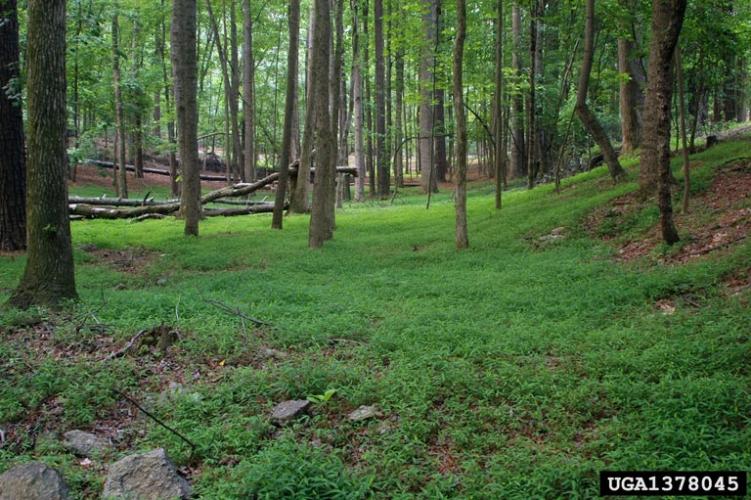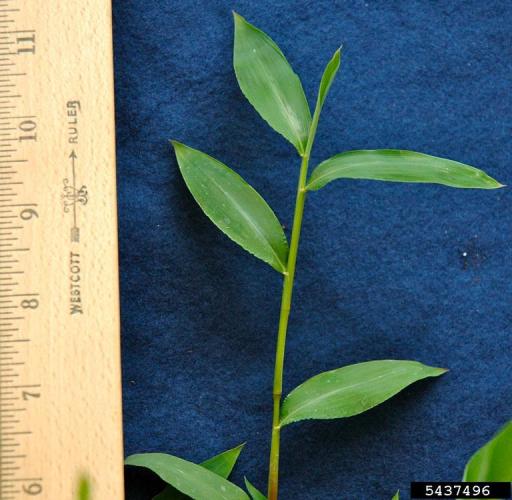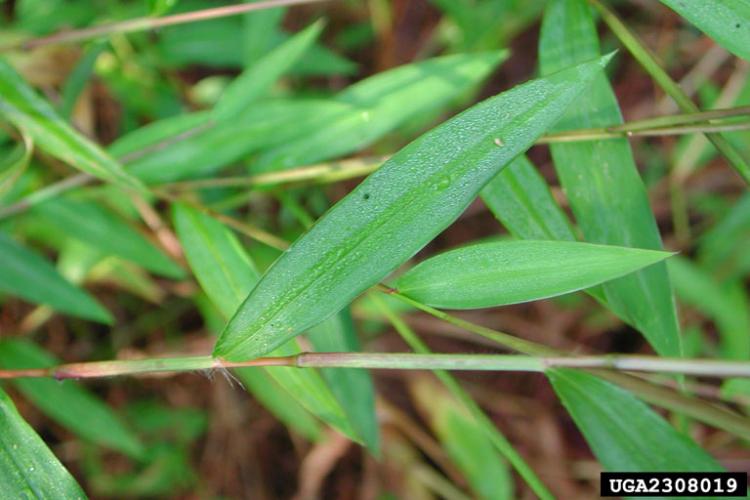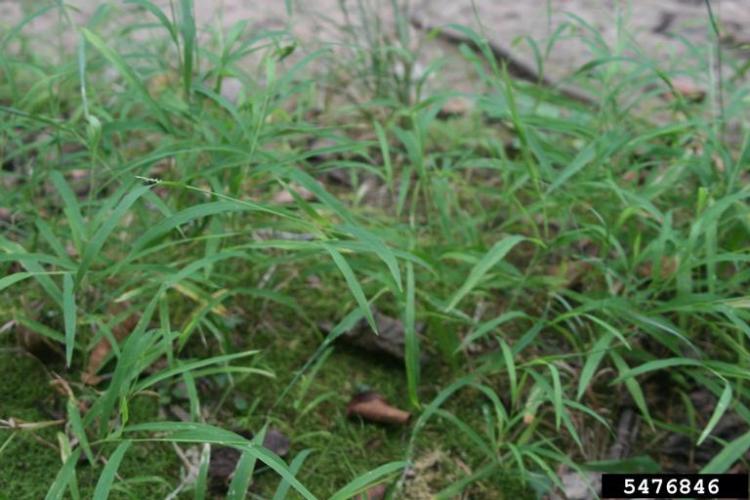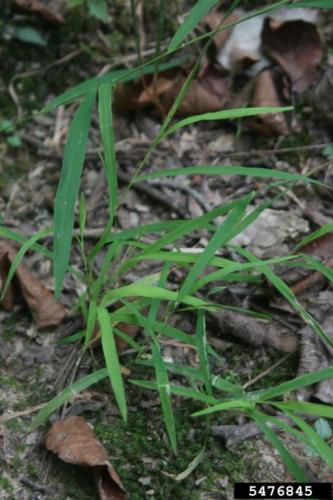Japanese Stiltgrass
Identification
Appearance
Microstegium vimineum is a delicate, sprawling, annual grass that is 0.5-3.5 feet in height. The stems can root at the nodes.
Foliage
The leaves are pale-green, alternate, lance-shaped, 1-3 inches long, asymmetrical with a shiny, off-center midrib. Upper and lower leaf surface is slightly pubescent. A silvery line runs down the center of the blade. Stems usually droop.
Flowers
Flowering begins in September, when delicate flower stalks develop in the axils of the leaves or at the top of the stems.
Fruit
Fruit is produced from late September through early October.
Biology
Ecological Threat
When Japanese stilt grass invades a site, it can quickly crowd out native plant species. Invasions can also change soil nutrient cycling processes, inhibit tree survival and growth, and reduce light availability. After it dies back in late fall, it forms a thick layer of smothering thatch that is slow to decompose.
Origin
Japanese stilt grass was first documented in Tennessee in 1919. Its introduction into the United States was accidental, likely a result of its use as a packing material for porcelain.
Habitat
This annual grass is adapted to shaded forest environments. It also occurs on forest edges, ditches, floodplain forests, and roadsides.
Life Cycle
Stilt grass reproduces exclusively by seed. One plant may produce 100 to 1,000 seeds that typically fall close to the parent plant. Seeds may be carried by water during heavy rains or move about in contaminated hay, soil or mud stuck in footwear. Stiltgrass seeds remain viable in the soil for five or more years and germinate readily.
Vermont Distribution
In Vermont, this species is currently localized and restricted to the Champlain and Connecticut River Valleys. Populations are known from Addison County (Middlebury), Rutland County (Benson, Poultney), Bennington County (North Pownal), and Windham County (Brattleboro, Rockingham). First reported from Vermont in 2020 and actively spreading north (Gilman, 2023)
How You Can Help
Japanese stiltgrass is on the early detection list of plant species. Early detection of new infestations increases our ability to slow their spread and potentially eradicate them from affected areas.
Citations
PHOTO CREDITS
Japanese stiltgrass, 2308019, David J. Moorhead, University of Georgia, Bugwood.org
Japanese stiltgrass infestation, 1378045, Chris Evans, University of Illinois, Bugwood.org
Japanese stiltgrass against ruler, 5437496, Bruce Ackley, The Ohio State University, Bugwood.org
Native White Cutgrass, 5476846, Chris Evans, University of Illinois, Bugwood.org
Native White Cutgrass, 5476845, Chris Evans, University of Illinois, Bugwood.org
INFORMATION CREDIT
Invasive.org, Japanese stiltgrass
Pennsylvania DCNR, Japanese stiltgrass
Vermont Chapter of The Nature Conservancy
